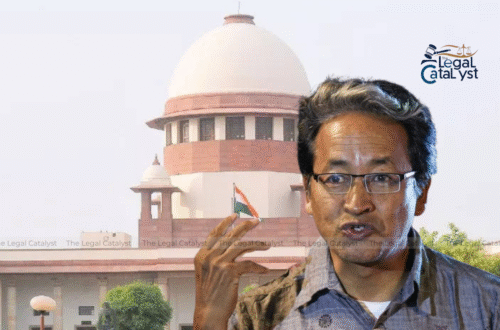This Article is written by RUFAI AMINU, a Student @ FEDERAL UNIVERSITY GUSAU, ZAMFARA STATE.
The question of whether criminals choose crime or are shaped by society is a profound inquiry that delves into the heart of human behavior, justice, and social structure. At first glance, it may seem that crime is a matter of individual choice—a conscious decision to break the law.
However, a deeper exploration through the lenses of law, psychology, and sociology reveals a complex interplay of factors that influence criminal behavior. I stuck my ink that while personal responsibility cannot be entirely dismissed, society plays a pivotal role in creating the conditions that lead individuals down the path of crime. Justice, psychology, and social structure converge to reveal that while responsibility matters, the roots of crime lie deeply embedded in the world we build.”
From a legal perspective, the justice system often operates on the premise that individuals are rational actors capable of making choices and should be held accountable for their actions. Laws are designed to deter crime by imposing penalties, assuming that fear of punishment will prevent wrongdoing. Yet, this framework sometimes overlooks the socio-economic realities that constrain choices. For example, poverty, lack of education, and limited access to legitimate opportunities can push individuals toward illegal activities as a means of survival or social mobility. The law, therefore, while necessary for maintaining order, may not fully address the root causes of criminality.
Developmental psychologists, clinical psychologists, and criminologists who study the psychological factors offers insight into the internal and external influences on behavior. Notable figures include researchers like John Bowlby (attachment theory), Robert Agnew (strain theory). Through empirical research, clinical studies, and longitudinal analyses, psychologists examine how early life experiences. Studies in developmental psychology show that adverse childhood experiences, trauma, and mental health disorders can predispose individuals to criminal conduct. Moreover, theories such as strain theory suggest that when people are unable to achieve culturally approved goals through legitimate means, they may resort to crime as an alternative.
The goal is to understand the underlying psychological mechanisms and lens underscores that lead individuals to commit crimes, not merely to label them as morally wrong. This understanding helps in developing interventions, therapies, and prevention strategies that address root causes like frustration, alienation, or unmet needs rather than a simple moral failing.
Sociologists such as Clifford Shaw and Henry McKay (social disorganization theory), Howard Becker (labeling theory), and Robert Merton (strain theory) are key contributors to these sociological perspectives on crime. They use qualitative and quantitative research methods, including community studies, surveys, and historical analysis, to explore how social structures, institutions, and cultural norms influence crime rates. They analyze patterns of inequality, discrimination, and social exclusion to understand the social context of criminal behavior.
The aim is to reveal how crime is not just an individual failing but a symptom of broader social dysfunction. Communities plagued by inequality, discrimination, and social exclusion tend to have higher crime rates. Social disorganization theory posits that weakened social institutions—like family, schools, and community organizations—fail to regulate behavior effectively, creating an environment where crime can flourish. Additionally, labeling theory highlights how societal reactions to deviance can reinforce criminal identities, making reintegration difficult and perpetuating cycles of offending.
Historical and contemporary examples further illustrate society’s role in “making” criminals. Marginalized groups often face systemic barriers that limit their opportunities and expose them to harsher legal penalties. For instance, racial profiling and economic disparities in the criminal justice system disproportionately affect minorities, suggesting that societal structures contribute to criminalization. Rehabilitation efforts that focus solely on punishment without addressing social inequalities tend to be less effective, reinforcing the idea that crime prevention requires societal change.
Furthermore, it is important to understand that the path to criminality is often shaped by a combination of personal experiences and societal influences that accumulate over time. Many individuals who engage in crime do so not out of inherent wickedness but because they find themselves trapped in cycles of disadvantage and limited choices. When communities lack adequate support systems—such as quality education, healthcare, and employment opportunities—people may feel powerless and disconnected from the social fabric.
This sense of exclusion can breed resentment and desperation, making crime appear as one of the few viable options. Therefore, addressing crime effectively requires more than just punishment; it demands investment in social programs that uplift vulnerable populations and create environments where positive choices are possible. By fostering empathy, understanding, and opportunity, society can help break the cycle that “makes” criminals, transforming lives and promoting justice that heals rather than harms.
Building upon the understanding that crime is rarely the result of isolated choices, it becomes clear that a comprehensive approach to addressing criminal behavior must delve deeply into the social, economic, and psychological contexts that shape individuals’ lives. The reality is that many people who commit crimes are responding to a complex web of pressures and limitations imposed by their environments.
For instance, growing up in neighborhoods marked by poverty, violence, and inadequate access to education often means that young people have fewer opportunities to envision a future outside of crime. These conditions can erode hope and foster a sense of alienation from mainstream society, which in turn can push individuals toward groups or activities that offer a sense of belonging, even if those involve illegal behavior. This social isolation is compounded when institutions that are supposed to protect and nurture—such as schools, families, and community organizations—are weakened or absent, leaving a vacuum where negative influences can take root.
Moreover, the psychological impact of sustained hardship cannot be underestimated. Chronic stress, trauma, and feelings of marginalization affect decision-making and impulse control, making it harder for individuals to resist temptations or foresee the long-term consequences of their actions. Mental health issues, often untreated due to stigma or lack of resources, further complicate this picture. When society fails to provide adequate mental health support, it inadvertently contributes to the cycle of criminality by leaving vulnerable individuals without the help they need to cope with their challenges in healthy ways.
Another critical factor is the role of systemic inequality and discrimination within the justice system itself. Statistics worldwide reveal that marginalized groups—whether defined by race, ethnicity, class, or other identities—are disproportionately targeted, arrested, and sentenced more harshly than their more privileged counterparts. This unequal treatment not only perpetuates injustice but also reinforces negative stereotypes and social stigmas that hinder rehabilitation and reintegration. When people are labeled as criminals and excluded from opportunities for education, employment, and social participation, the likelihood of recidivism increases, creating a self-fulfilling prophecy that traps individuals in a cycle of crime and punishment.
To truly transform the landscape of criminal behavior, society must move beyond punitive models and embrace restorative and preventive strategies. This means investing in early childhood development programs, improving access to quality education, creating job opportunities, and strengthening community networks that provide support and guidance. It also involves reforming the criminal justice system to focus on rehabilitation rather than mere retribution, ensuring that those who have erred are given the tools and chances to rebuild their lives. Mental health services must be integrated into both prevention and correctional frameworks, recognizing the deep connections between psychological well-being and behavior.
As Aliyu Sardauna, a once poor Nigerian citizen whose parents were kidnapped and held for a large ransom, reflected, “When society fails to support its victims and law enforcement is undertrained or indifferent, desperation can drive even the most honest individuals to negotiate with kidnappers.” This highlights the urgent need for empathy and effective justice systems to truly understand and address the roots of crime.
As Nelson Mandela once said, “It is said that no one truly knows a nation until one has been inside its jails.” This profound insight reminds us that understanding crime requires empathy and a willingness to look beyond the surface. Criminality is not born in isolation but forged in the crucible of societal failures and personal struggles. By addressing these root causes with compassion and comprehensive policies, society can transform the narrative from punishment to prevention, from exclusion to inclusion.
Connect with us on Instagram – X – LinkedIn for daily updates, quizzes, and other materials1
Read More @Article – The Legal Catalyst







